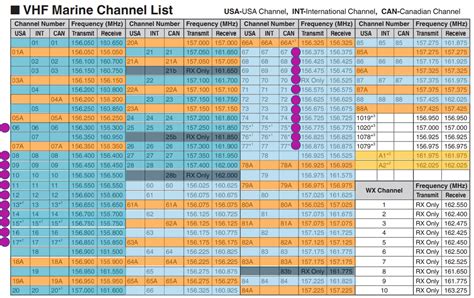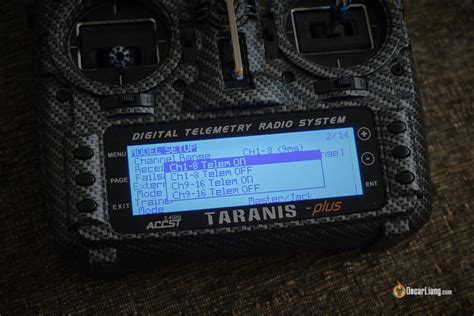chanel 1-8 or 9-16 | RX Binding Options: Ch1 chanel 1-8 or 9-16 Boaters should normally use channels listed as Non-Commercial for their working channel. Channel 16 is used for calling other stations or for distress alerting. Channel 13 should be used to contact a ship when there is danger of collision.
$5.00
0 · U.S. VHF Marine Radio Channels and Frequencies
1 · RX Binding Options: Ch1
1970s Rolex Oyster Perpetual Date. Rolex Florentine. Rolex Linen Dial 1601. Rolex Ladies Tt Oyster. Rolex Rainbow. Rolex 1505. Rolex 1625. Mens Rolex Tiffany. Rolex .
For mini quad, 99.9% of the times you should just select “Ch1-8, Telem On“. But if you want to know what other options mean, keep reading. See moreThe options “Telem ON” and “Telem OFF” determine whether telemetry is enabled or disabled for this receiver. The way telemetry works, is because there is a small transmitter on the radio receiver to send data back to the radio transmitter. There are situations . See moreIt’s true that by setting “channel range” to 8 channels instead of 16 can reduce latency in the Frsky radio control link. But this is not how to select 8 channels. Youselect 8 channels under . See more Boaters should normally use channels listed as Non-Commercial for their .
In the newest version of OpenTX, a new dialog box has been added when you try to bind a Frsky receiver to your Taranis. There are four options, “Channel 1-8 or 9-16, and Telemetry On or Off. This article will explain what these options mean. Boaters should normally use channels listed as Non-Commercial for their working channel. Channel 16 is used for calling other stations or for distress alerting. Channel 13 should be used to contact a ship when there is danger of collision. Each channel on your marine radio has a designated function, with some set aside for distress calls, non-commercial communication, or port operations. For instance, knowing that channel 16 is the international distress frequency is the first part to memorize.For example, in the US Ch 1A is a simplex channel operating on 156.050 MHz. Internationally, Ch 1 is a duplex channel operating across frequencies 156.050 MHz and 160.050 MHz. In the US, the second part of the duplex channel, the 160.050 MHz frequency, is used by railways instead.
Channels and frequencies. A marine VHF set is a combined transmitter and receiver and only operates on standard, international frequencies known as channels. Channel 16 (156.8 MHz) is the international calling and distress channel.Channel 16 - Distress calling and safety, ship-to-ship and ship-to-coast. Users must switch to a "working" channel after making initial contact (except in emergencies). All vessels must monitor Channel 16 when not using the VHF radio for other purposes.The 1-8 channel is a powerful energy channel in Human Design that connects the Head and the Throat Centers. This channel represents the energy of inspiration and leadership, making those who have it naturally gifted at communicating new ideas and inspiring others to follow their vision.
Channel 16 VHF (156.8 MHz) is a marine VHF radio frequency designated as an international distress frequency. [1] Primarily intended for distress, urgency and safety priority calls, the frequency may also carry routine calls used to establish communication before switching to another working channel. For example, Channel 1 corresponds to 26.965 MHz, while Channel 40 corresponds to 27.405 MHz. When a CB radio operator chooses a channel, they are selecting the frequency range that their radio will use for transmission and reception. In the US, you can use channels 1 to 11 (or 1 to 9), giving you 3 non overlapping 22MHz (or 20MHz) channels, and in Europe channels 1 to 13 can be used, providing 4 non overlapping 20MHz channels, or two non interfering 40MHz N mode channels.
In the newest version of OpenTX, a new dialog box has been added when you try to bind a Frsky receiver to your Taranis. There are four options, “Channel 1-8 or 9-16, and Telemetry On or Off. This article will explain what these options mean. Boaters should normally use channels listed as Non-Commercial for their working channel. Channel 16 is used for calling other stations or for distress alerting. Channel 13 should be used to contact a ship when there is danger of collision. Each channel on your marine radio has a designated function, with some set aside for distress calls, non-commercial communication, or port operations. For instance, knowing that channel 16 is the international distress frequency is the first part to memorize.For example, in the US Ch 1A is a simplex channel operating on 156.050 MHz. Internationally, Ch 1 is a duplex channel operating across frequencies 156.050 MHz and 160.050 MHz. In the US, the second part of the duplex channel, the 160.050 MHz frequency, is used by railways instead.

U.S. VHF Marine Radio Channels and Frequencies
Channels and frequencies. A marine VHF set is a combined transmitter and receiver and only operates on standard, international frequencies known as channels. Channel 16 (156.8 MHz) is the international calling and distress channel.Channel 16 - Distress calling and safety, ship-to-ship and ship-to-coast. Users must switch to a "working" channel after making initial contact (except in emergencies). All vessels must monitor Channel 16 when not using the VHF radio for other purposes.The 1-8 channel is a powerful energy channel in Human Design that connects the Head and the Throat Centers. This channel represents the energy of inspiration and leadership, making those who have it naturally gifted at communicating new ideas and inspiring others to follow their vision.Channel 16 VHF (156.8 MHz) is a marine VHF radio frequency designated as an international distress frequency. [1] Primarily intended for distress, urgency and safety priority calls, the frequency may also carry routine calls used to establish communication before switching to another working channel.
For example, Channel 1 corresponds to 26.965 MHz, while Channel 40 corresponds to 27.405 MHz. When a CB radio operator chooses a channel, they are selecting the frequency range that their radio will use for transmission and reception.

fendi white high top
RX Binding Options: Ch1
1984 Historical Context 📺. ‘1984’ was written between the years of 1947-48, only 2-3 years after the end of World War II. This conflict of immense proportions, the outcome of which was critical to the survival of democracy, inspired George Orwell to consider the tenuousness of the people’s rule.
chanel 1-8 or 9-16|RX Binding Options: Ch1



























